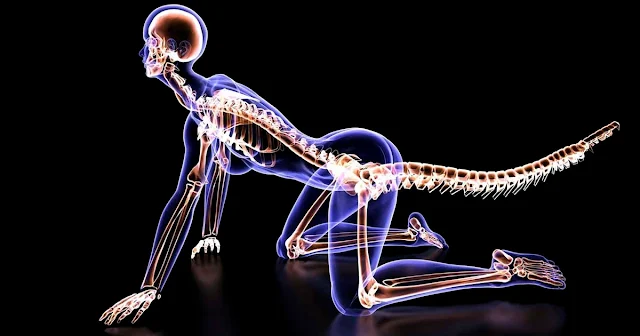One of the most remarkable changes in human evolution is the loss of our tails, a transformation that occurred around 25 million years ago. This pivotal shift not only altered the trajectory of our species but also marked a significant moment in the evolutionary history of primates. While scientists have long speculated on why humans lost their tails, the genetic cause has remained elusive—until now. A recent study published in Nature has finally uncovered the genetic factors responsible for this evolutionary change.

The Quest to Understand Tail Loss
The journey to unravel the mystery of human tail loss began in an unexpected way. Bo Xia, a graduate student at New York University, was inspired to investigate the origins of the human tailbone after injuring his own coccyx. This personal curiosity led Xia and his team to embark on a groundbreaking scientific investigation.
Through careful research, the team focused on the TBXT gene, which plays a crucial role in regulating tail length in various species. Their research revealed a unique genetic mutation within this gene, providing a major breakthrough in understanding human evolution.
The Role of Jumping Genes
A key aspect of this discovery lies in the role of Alu elements, often called “jumping genes.” These genetic elements, specific to primates, can move within the genome and cause significant changes. The researchers found that Alu elements inserted themselves into the TBXT gene, triggering a chain reaction that led to the loss of our tails.
This insertion activated a process known as alternative splicing, where RNA molecules are cut and restructured, which ultimately led to the deletion of a crucial exon. This change altered the structure and function of the resulting protein, leading to the tail loss seen in humans.
Validation Through Mice Studies
To confirm their findings, the researchers engineered laboratory mice with the same genetic mutations found in humans and apes. These genetically altered mice lost their tails, providing compelling evidence that the identified mutation plays a crucial role in the absence of tails in humans and other primates.
However, the study also uncovered a downside to tail loss: an increased risk of neural tube defects, such as spina bifida. This finding highlights the complex balance between evolutionary benefits and potential genetic trade-offs.
The Broader Implications
This discovery has profound implications not just for understanding human evolution, but also for human anatomy and health. The loss of our tails was not a random event but a genetic adaptation with lasting consequences. It illustrates the complex relationship between genetic changes and the way they shape our physiology over time.
As we continue to study our evolutionary past, these findings remind us of the intricate process of natural selection and genetic innovation that has shaped humanity. This breakthrough also underscores the power of scientific inquiry in uncovering the mysteries of our origins, offering insight into the past that can help us understand our future.
The identification of the genetic reasons behind tail loss is a testament to the persistence of scientific exploration and the ongoing quest for knowledge about our evolutionary journey.
Agnetha Faltskog became a superstar with ‘ABBA’ – better sit down before you see her today, age 72

ABBA, widely regarded as one of the most renowned bands in history, never fails to leave audiences spellbound. Agnetha Faltskog, one of the members of the foursome, has chosen to lead a solitary existence despite the group’s fame. Recognized for her captivating vocals when performing alongside Anni-Frid Lyngstad, Faltskog remains an enigmatic figure despite having made a substantial impact on ABBA’s musical legacy.

A Memorable Appearance
Agnetha Faltskog’s contribution to ABBA cannot be overstated. As one of the lead vocalists, her incredible pop voice connected with the crowd, causing them to dance to the infectious beats of some songs and feel the depth of feeling in others. She left a lasting impact on the music industry and rose to fame for reasons other than her songs.


Life After ABBA
Faltskog’s curiosity with life outside of ABBA expanded along with the band’s notoriety. Following the band’s dissolution in 1983, she embarked on a solo career but quickly discovered how much she missed the responsibilities of the music industry. She was able to live a more comfortable and serene life since her priorities shifted to center around her own interests and objectives.



Leave a Reply